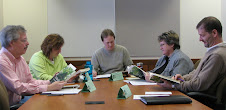 unces. An aluminum soda can can be recycled into another soda can; plastic from a soda bottle is "downgraded" to make a non-food container or product to insure sterile food packaging.
unces. An aluminum soda can can be recycled into another soda can; plastic from a soda bottle is "downgraded" to make a non-food container or product to insure sterile food packaging. The energy required to manufacture an aluminum can with 50% recycled fibers is 80Btu per fluid ounce. Therefore, 30% of the enrgy needed to make the soda container is saved when 12 ounce aluminum cans made of recycled materials are purchased instead of 2-liter plastic bottles. Aluminum is a popular metal to recycle because it costs less to make a soda can out of recycled materials than out of new metal. In 1989, America recycled 60% of the 80 billion cans used.
One out of every four PET botles are currently being recycled. PET bottles are acutally a form of polyester so they can be recycled into carpeting, suits and fiberfill for ski jackets. HDPE can become flower pots and trash cans.
--University of Florida, Cooperative Extension Service, Fact Sheet EES-77










